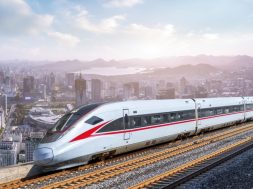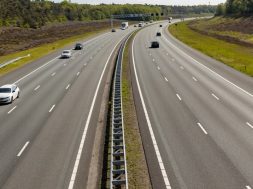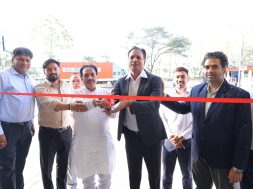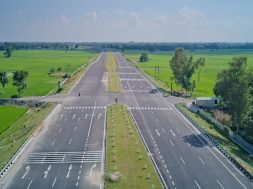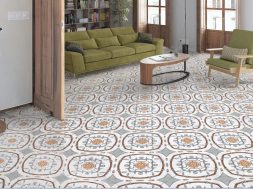Presenting KONE DX Class Elevators, Escalators and travelators for Airports
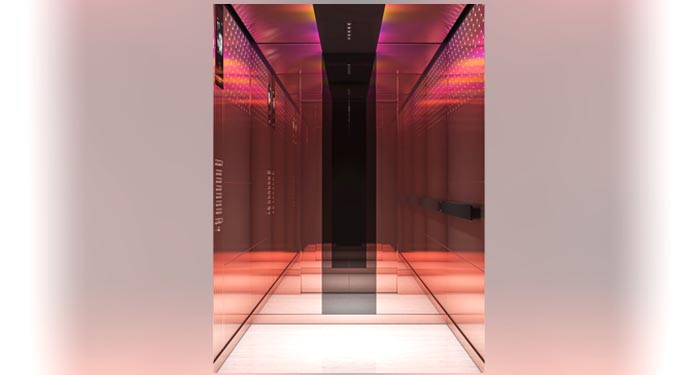
An airport is one of the most vital infrastructures, giving elevators, escalator and travelators, a critical role in the movement of passengers.
How do elevators and escalators help in the effective management of passengers in an airport?
Growing urbanization and service economy have hugely impacted the demographics and people’s mobility. Understandably, mobility solutions such as elevators and escalators have gone through radical changes – transforming how people move across the infrastructures and interact with their surroundings. An airport is one of the most vital infrastructures in this regard – giving elevators a critical role in the movement of passengers. The exponential growth in business travel and tourism has resulted in creating huge infrastructure with an eye for passengers’ utmost convenience.
Airports can adapt in real-time
Connecting elevators and escalators to the airport system allows the infrastructure to adapt in real-time and react to the real-life needs of the passengers. It also helps the airport deal with the
bottlenecks that can occur during some unpredictable situations. Seasonal increase in air travelers, resulting in unexpected congestion due to disruption in flight schedules, put pressure on the infrastructure and movement solutions within the airport. When a plane arrives late and lands at a gate far from the transit area, to help the anxious passengers who would not like to miss their flight, the auto walks in the transit area come in very handy – reducing the time it would take to go there manually.
Disruption free movement
The world’s first digitally connected elevators- the KONE DX Class provide a holistic view of the data. Airports can analyze said data to look at performance and safety. The operators can detect any problem in advance and react quickly. With technology, predictability and intelligence, unexpected disruptions in services are eliminated adding to passenger comfort.
Better navigation and ease of movement
With better people flow solutions in place, customers would have less to complain about. As the airport would feel natural and intuitive, the customers would have an easy time navigating the airport. It can make a large difference to customer experience.
As more and more airports embrace energy efficiency, what kinds of elevators are desired?
More and more airports are consciously working towards the reduction in specific energy consumption, implementing energy-saving projects, waste management and climate change initiatives. The increase in passenger count has increased the need for elevators and escalators for better flow solutions. Thankfully, many elevator manufacturers have noticed this need and focused on creating elevators and escalators with improved hardware and better controls that are more compact, efficient, and in extreme cases, even generate electricity for the facilities.
Qualities Prominent in Most Energy Efficient Elevators
New and smart elevators like KONE DX are more environmental-conscious. They implement the following ways to ensure lesser power consumption.
• Software and microprocessor-based controls: Elevators have historically relied on electromechanical relays for control. However, modern escalators and elevators depend more on software and microprocessor-based controls.
• In-cab sensors providing better standby solutions: Within-cab sensors, elevators can enter in an idle or sleep mode, switching off ventilation, lights, screens, and music, when unoccupied. It has been proven to reduce energy consumption by as high as 75%.
• Destination Dispatch Software: Stop requests are batched with destination dispatch software controls. It ensures that fewer stops are made. Grouping of passengers for a particular destination floor directly results in lower waiting times – reducing the need for more elevators.
• Regenerative Drives: An ascending elevator draws power from the airport facility. However, that energy gets stored alongside the standard braking resistor during descent. With the regenerative drives, that stored energy is commuted back onto the airport facilities so that it can be used for lighting or HVAC.
These are the quintessential attributes that must be present in airport elevators.
Since elevators in airports are a good medium for Digital Out of Home advertising or DOOH, what kind of additional features are desired?
The Digital Out of Home Advertising has redefined digital marketing at airports. Statista states that the DOOH spending will rise to $15.9 billion in 2027. With the rise of airports and destinations, there is a need to adjust to the current trends and provide more features in the airports when it comes to Digital out of Home Advertising. People’s needs have started to evolve, and they respond more to personalized adverts. Considering those requirements, here are the new features that airport DOOH must implement to give a better experience to the customers.
The content displayed on the screen and the language used must align with what the consumers requirement. Messages containing guidelines for making the travel a pleasant experience, courtesy
to co-passengers, dos and don’ts while in aircraft, etc. The DOOH ads now need to be more personalized. Statistics show that adverts attracting specific demographics can resonate 60% more with the audience. DOOH should also be contextual.
• The acoustics in the DOOH enabled elevators should be balanced in such a way that the audio does not disturb the passengers.
• The sensor in the elevator should enable auto switch-off when the elevator is not carrying any passenger. This makes the DOOH energy-efficient as well.
• The DOOH enabled elevator should have screens on both the sides of the wall panel. Passengers should be able to view it from any direction.
What are your dedicated products for airports?
When it comes to people flow solutions, high-rise buildings take most of the focus. However, when it comes to airports, people flow solutions are more important and critical, and their impact
is much more substantial. With that in mind, we provide elevators, escalators and moving walks for airports.
Elevators
The KONE DX Class Elevators revolutionize user experience at the airports. These elevators are designed with the materials that put emphasis on aesthetics and attributes in equal measure. KONE DX is the world-class next generation of smart elevators backed by IoT technologies thus providing robust flow solutions that make it easy for the airports to be functional and easy to navigate. KONE DX can be easily customized for DOOH advertising.
24/7 Connected Services
KONE has implemented the IoT in most of its elevators and therefore can provide 24/7 connected services at the airports. These services provide valuable info about the upcoming maintenance needs so that the issues can be found before they become a problem. The escalators and elevators are connected to cloud-based services and use AI-based analytics to take smarter and predictive maintenance decisions. They are continually analyzed and are transparent in every regard.
Escalators
KONE TransitMaster 120: It is an escalator meant for airports with a maximum rise of 15 meters. It delivers a speed of 0.5, 0.65, and 0.75 meters per second. It is durable, eco-efficient, and optimized for transit centers. It is able to retain high speeds even during the most demanding traffic conditions. The T ansitmaster 120 adheres to all the safety codes, both national and international. It contains several safety features that are needed for a transit centre including a comb plate impact device switches and emergency stop buttons for the passengers. KONE Transitmaster 140 was also designed keeping airports in mind. Delivering speeds from 0.5, 0.65, to 0.75 meters per second, the Transitmaster 140 has a 1000mm step width and can go up to a maximum vertical rise of 35 meters.
Travelators
The KONE TransitMaster 165 is a heavy-duty autowalk designed for heavy infrastructure segments where there are demanding traffic conditions, including airports, railways, stadiums, and other transit centers. It delivers speeds of 0.5, 0.65, and 0.75 meters per second and extends up to 100 meters in length. Much like our escalators, we have implemented impact device switches and emergency stops for safety.
For more info visit: https://www.kone.com/en/products-and-services/elevators-escalators-automatic-doors/kone-dx-class-elevators.aspx
Cookie Consent
We use cookies to personalize your experience. By continuing to visit this website you agree to our Terms & Conditions, Privacy Policy and Cookie Policy.
